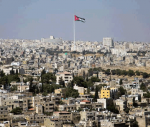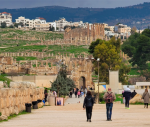You are here
Can Barcelona create a new kind of tourist economy?
Dec 15,2021 - Last updated at Dec 15,2021
BOSTON — When I first began visiting Barcelona in the early 2000s, it was a dazzling metropolis — optimistic, lively, progressive, and teeming with young people from all over Europe. It balanced its Catalan pride with an openness to the world. The 2002 film The Spanish Apartment, a comedy about a group of exchange students in Barcelona, showed why it was considered the unofficial capital of Mediterranean Europe.
Unfortunately, in the years since, Barcelona has become a victim of its own success. But the COVID-19 pandemic might open new avenues for its future.
It wouldn’t be the first time Barcelona has rebounded. During Francisco Franco’s dictatorship, it was considered a gray place that repressed both its natural beauty and its civic life. After Spain’s transition to democracy, Barcelona seized the opportunity to be reborn. Many say the turning point was the 1992 Olympic Games, which savvy local administrators leveraged to showcase the city internationally and transform it into an urban heavyweight.
With a limited budget, mayor Pasqual Maragall capitalised on the Olympics to begin one of the most successful urban redevelopments in late twentieth-century Europe. He enlisted the help of top local and international design professionals to create a municipal plan that ensured the city would benefit from the legacy of the Games long after they ended.
Beyond constructing sports facilities, the plan tackled two of Barcelona’s most profound urban challenges: Its waterfront and its public spaces. The waterfront had long been cut off from the rest of the city due to myopic infrastructural and industrial development. Today, thanks to major work completed just in time for the Olympics, the port has been integrated with the city by road and public transport, and has become a lively district where swimmers swarm the beaches.
Reinventing the public spaces required thinking of them not only as physical places but as the soul of Barcelona’s civic spirit. Projects to reclaim squares and parks reoriented citizens’ conception of their collective heritage and identity and helped to cultivate local architectural talent, reviving a noble tradition that Francoist Spain disrupted.
These clever design choices were amplified through “urban marketing”. With national borders softening across Europe in the late 1990s, regional capitals found themselves competing to attract talent, tourists, and capital using the tools of planning and design. Barcelona’s efforts at urban marketing, beginning with the 1992 Games, proved particularly successful. Since 2012, the city has attracted between 25 and 30 million visitors every year — an enormous number for a municipality of just over 1.5 million inhabitants.
Like many other hotspot destinations, Barcelona has suffered the negative consequences of mass tourism: Strain on public goods, erosion of commercial services for residents, and indirect expulsion of the local population to make room for hotels and short-term rentals.
“Being a tourist means escaping responsibility,” as the novelist Don DeLillo put it. Tourists often travel with impunity, distorting local economies and moving on. They exploit the urbs — the physical city, as it was called by the ancient Romans — without establishing any relationship with the people or civitas.
Locals have responded with increasing anger. Anti-tourist graffiti and even petty violence against tour groups have made international headlines. The backlash helped the populist Ada Colau win the 2015 mayoral election. Colau proposed radical policies, including confiscation of empty apartments for use as public housing. But such proposals do not add up to a new urban vision.
The COVID-19 pandemic turned Barcelona’s woes into a crisis. In 2020, the horde of tourists suddenly disappeared, leaving the streets empty and hundreds of shops on the verge of closure. Political, business, and academic leaders agree that the era ushered in by the 1992 Games — defined by the hit-and-run tourism that produced Barcelona’s success and became its undoing — is ending. The Barcelona of tomorrow remains undetermined. What will its Olympic moment be?
Perhaps it is time to consider an alternative model of travel — let’s call it “pace tourism” — that could be used to reinvent Barcelona and other cities around the world. Pace tourists would remain for weeks or months in a single place instead of constantly jumping from one city to the next, allowing them time to rediscover the meaning of concepts like integration and civic contribution. Historically, long sojourns have been considered a luxury for elites — think of Peggy Guggenheim or Cole Porter in Venice — but the rise of remote work could make such timeframes accessible to many more people.
Video conferencing already allows “digital nomads” to settle in places far from home without interrupting their professional lives. And the otherwise questionable flexibility of the so-called “gig economy” could create local job opportunities that swiftly adjust with shifting urban challenges. Cities like Barcelona could harness the power of online platforms to attract pace tourists. Governments could encourage hotels, airlines, and even restaurants to offer greater discounts for longer stays.
Likewise, cities could benefit from the pandemic’s impact on the infrastructure of higher and vocational education. If Barcelona offered students attending online classes low-cost accommodations, they could finish school and then work in the city as nurses, solar panel installers, or even tech entrepreneurs.
There are numerous, complex issues that would need to be resolved to realise these ideas. And executing them would require courage and audacity. But few places have these qualities in Barcelona’s abundance. Catalan creativity and resourcefulness could contribute to solving the great urban conundrum — how to engage with global tourism without succumbing to it — that Barcelona itself helped introduce to the modern world.
Carlo Ratti, director of the Senseable City Lab at MIT, is co-founder of the international design and innovation office Carlo Ratti Associati. Copyright: Project Syndicate, 2021.












